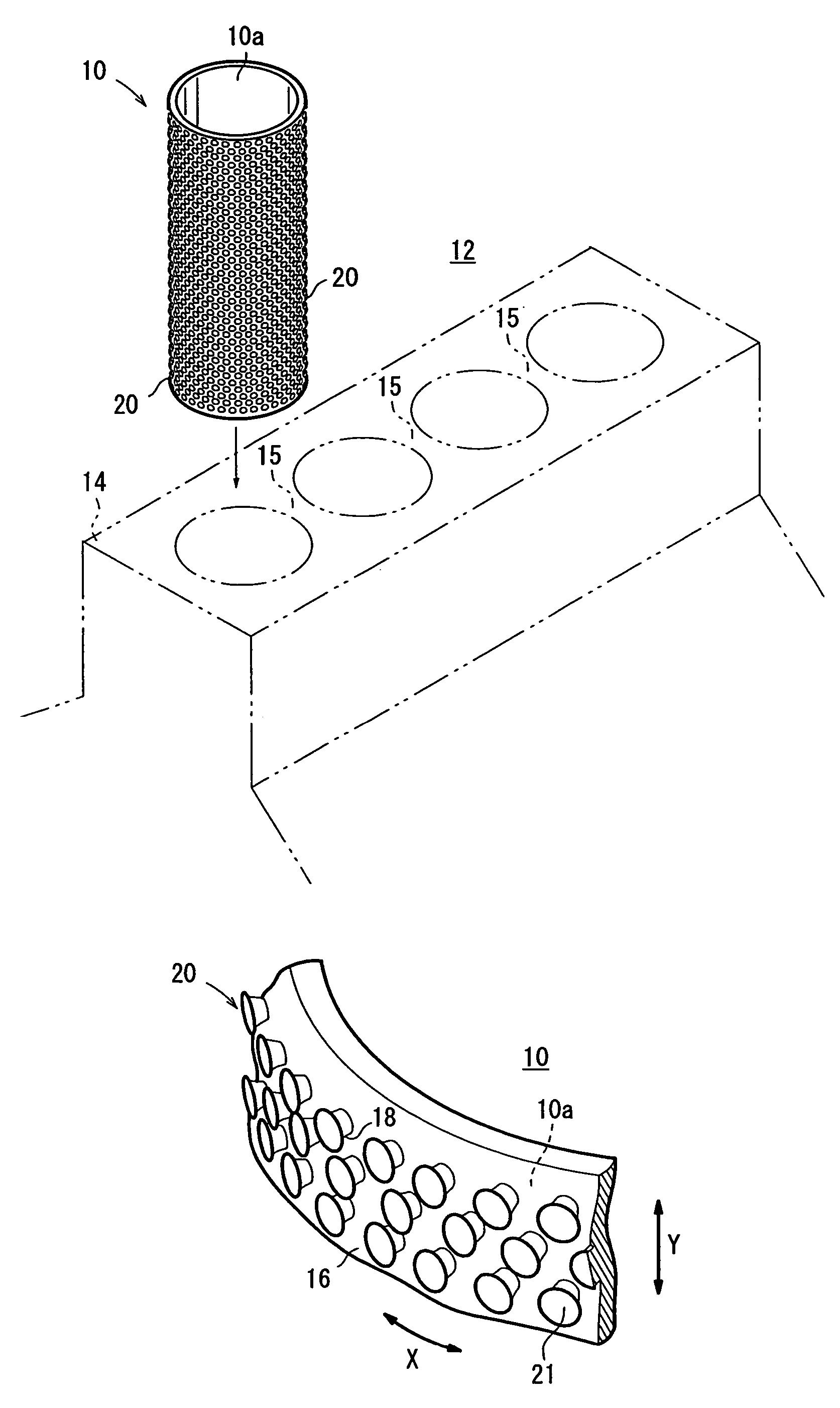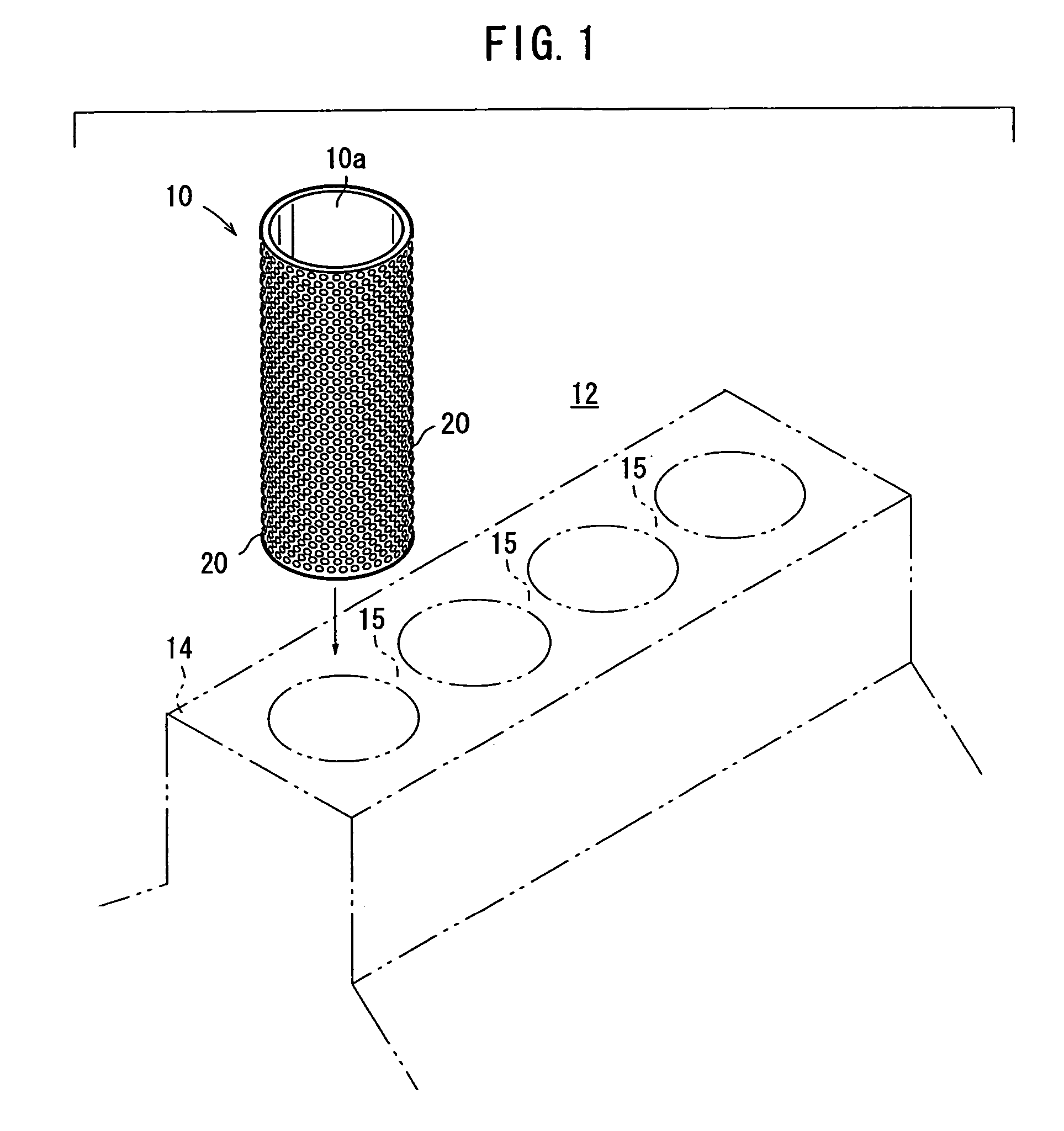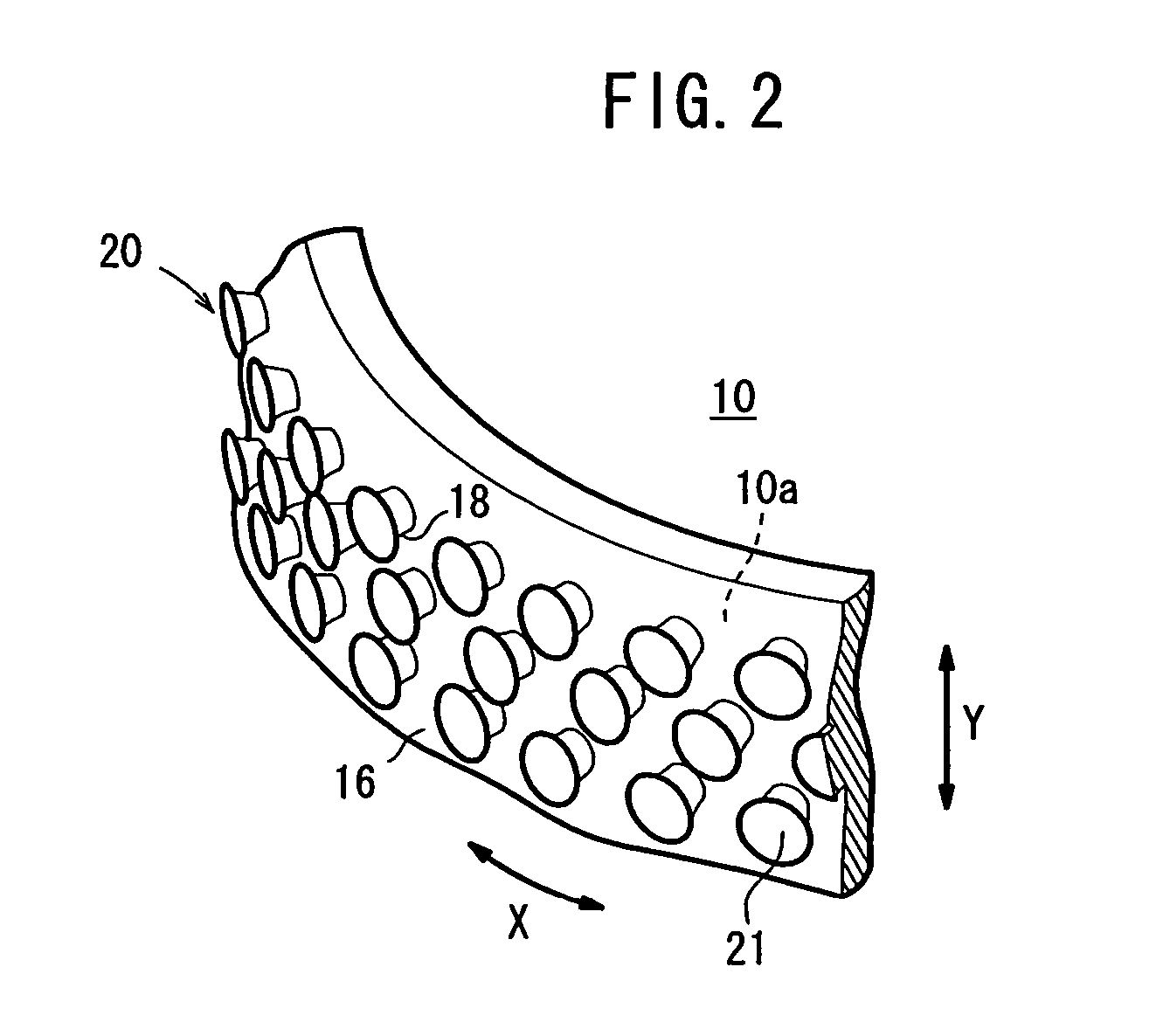Cast-iron insert and method of manufacturing same
a technology casting iron, which is applied in the field of cast iron inserts, can solve the problems that the inner surface of the cast iron inserts b>1/b> cannot be accurately machined, and achieve the effect of increasing the intimate contact with another metal effectively, simple process and desired level of accuracy
- Summary
- Abstract
- Description
- Claims
- Application Information
AI Technical Summary
Benefits of technology
Problems solved by technology
Method used
Image
Examples
Embodiment Construction
[0035]FIG. 1 shows in exploded perspective a cylinder block 12 to be cast around a cylinder liner or sleeve 10 as a cast-iron insert according to the present invention.
[0036]As shown in FIG. 1, the cylinder block 12 includes a block 14 made of an aluminum alloy, for example, to produce lighter engines. The cylinder block 12 also includes a plurality of cylinder liners or sleeves 10 (one shown) around which an aluminum alloy is cast as the block 14.
[0037]Each of the cylinder liners 10 is molded of cast iron according to a centrifugal casting process. As shown in FIG. 2, the cylinder liner 10 has a plurality of protrusions 20 disposed on an outer circumferential surface 16 thereof over which the aluminum alloy is to be cast. Each of the protrusions 20 has a substantially conical undercut or neck 18 which is progressively spread outwardly and a flat outer face 21 on the distal end of the undercut or neck 18.
[0038]If the outer circumferential surface 16 of the cylinder liner 10 has a di...
PUM
| Property | Measurement | Unit |
|---|---|---|
| height | aaaaa | aaaaa |
| height | aaaaa | aaaaa |
| diameter | aaaaa | aaaaa |
Abstract
Description
Claims
Application Information
 Login to View More
Login to View More - R&D
- Intellectual Property
- Life Sciences
- Materials
- Tech Scout
- Unparalleled Data Quality
- Higher Quality Content
- 60% Fewer Hallucinations
Browse by: Latest US Patents, China's latest patents, Technical Efficacy Thesaurus, Application Domain, Technology Topic, Popular Technical Reports.
© 2025 PatSnap. All rights reserved.Legal|Privacy policy|Modern Slavery Act Transparency Statement|Sitemap|About US| Contact US: help@patsnap.com



